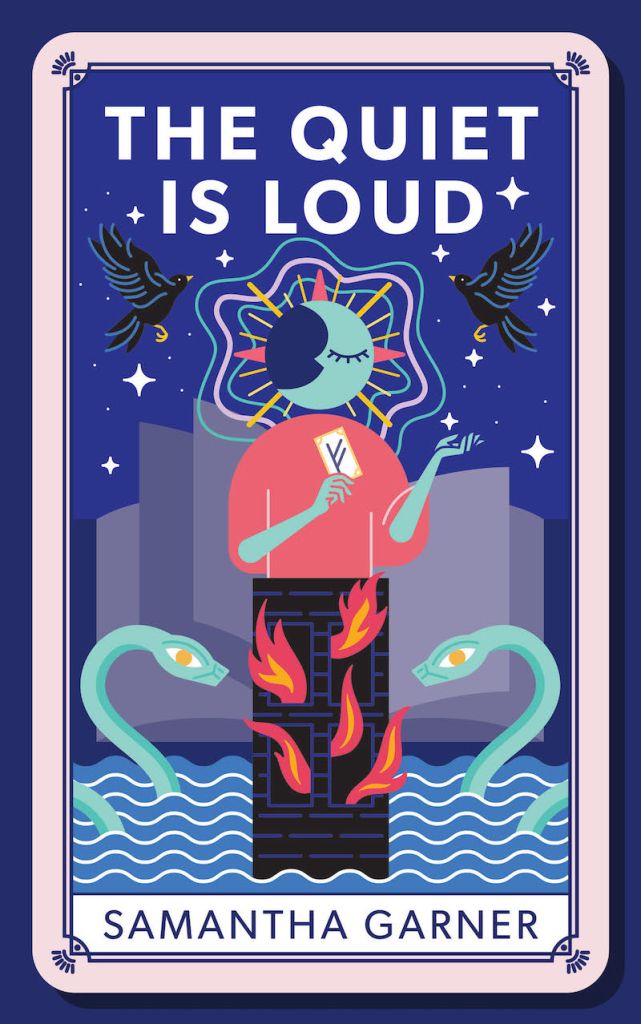 The Quiet is Loud (forthcoming from Invisible) is a zeitgeist zirconia, a choker of sparkling speculation for Gen Z readers whose reading tastes are migrating toward adult literary spec fic. For her debut novel, Toronto writer Samantha Garner pours her curiosity into an approachable, recognizable narrative structure that is just right for this audience: the world as we know it, but with one important, uncanny difference. In Quiet, that key difference is the existence of people with telepathic and telekinetic powers—“vekers.”
The Quiet is Loud (forthcoming from Invisible) is a zeitgeist zirconia, a choker of sparkling speculation for Gen Z readers whose reading tastes are migrating toward adult literary spec fic. For her debut novel, Toronto writer Samantha Garner pours her curiosity into an approachable, recognizable narrative structure that is just right for this audience: the world as we know it, but with one important, uncanny difference. In Quiet, that key difference is the existence of people with telepathic and telekinetic powers—“vekers.”
Garner is deeply attentive to the social consequences of the world she has created. As we might expect in a reboot of The Twilight Zone or in an X-Men spin off, vekers are misunderstood and feared; their nickname is a slur. Most have no choice but to hide their identities, including our protagonist, Freya. Though in her mid-20s, Freya’s maturity and independence are hindered by a childhood tragedy that occurred just as she was discovering her psychic abilities. With the support of a trusted cousin and a handful of new veker friends, Freya’s story becomes a coming-of-age narrative that allows her to develop and heal.
To introduce Freya, Garner paints a vignette that has since taken up residence in my mind’s eye: late night, a cozy apartment living room, takeout containers, incense, a webcam, the blue glow of a laptop screen, a tarot deck spread out on a coffee table. Freya is a homebody who makes a living by giving online tarot readings. (Way too relatable during a global pandemic.) She has structured her life and her work to protect her secret ability while making the most of it in a subtle, controlled way—by offering her clients card readings that are just that much more useful or accurate. Freya’s carefully constructed professional forcefield wavers when someone else with telepathic abilities finds her in an online chat room—and then Quiet is off to the races.
Even as the narrative picks up speed, that hazy vignette follows Freya throughout the novel. It’s not just a portrait of her; it’s a family portrait, maybe even a reliquary. Her beautiful name signals her mother’s Scandinavian heritage; the tarot cards were a gift from her mother, too. She lives for Filipino food—an important link to her estranged father. Her family’s internal mythologies are always on her shoulders: her mother’s warmth, her father’s talent and betrayal. Scandinavian and Filipino gods and myths come along for the ride too, their parables providing Freya with guidance and solace as her safe, comfortable world is turned upside down.
Depending on how you like your fiction, Quiet has a few characteristics that may either distract you or make you feel well attended to as a reader. Emotional and physical exposition are front and centre. Garner doesn’t expect you to infer her characters’ fears or worries from a gesture, an insinuation, or a symbol; her narrator always finds a way to include that information. And though half of the book is set in Freya’s childhood, transitions from the book’s present to its past are always clearly marked by a new chapter. There is no fade through, no need to gather temporal clues from time-stamped pop culture references—hence Quiet’s natural fit for readers who are almost (but maybe not quite) ready to dive into the more left-field, experimental side of speculative fiction. Garner wears her spec fic, geek, and SF influences on her sleeve, and Quiet is a warm welcome to the more literary part of that universe.

